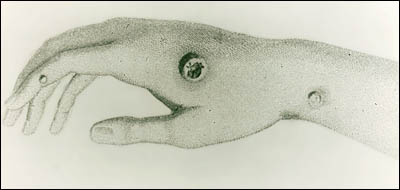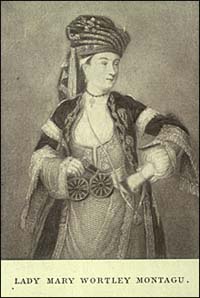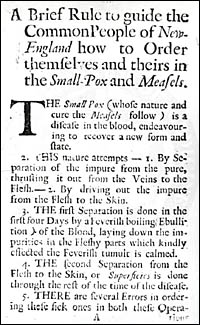
Variolation
In Asia, practitioners developed the technique of variolation—the deliberate infection with smallpox. Dried smallpox scabs were blown into the nose of an individual who then contracted a mild form of the disease. Upon recovery, the individual was immune to smallpox. Between 1% to 2% of those variolated died as compared to 30% who died when they contracted the disease naturally.
By 1700, variolation had spread to Africa, India and the Ottoman Empire.

In contrast to Asians and Africans who inoculated by blowing dried smallpox scabs up the nose, Europeans and their American cousins tended to innoculate through a puncture in the skin.
In 1717, Lady Mary Wortley Montagu, the wife of the British ambassador, learned about variolation in Constantinople. In 1721, at the urging of Montagu and the Princess of Wales, several prisoners and abandoned children were inoculated by having smallpox inserted under the skin. Several months later, the children and prisoners were deliberately exposed to smallpox. When none contracted the disease, the procedure was deemed safe and members of the royal family were inoculated. The procedure then became fashionable in Europe.
African slaves introduced variolation into America. In Massachusetts, Cotton Mather learned about the practice from his slave, Onesimus. Mather publicized the technique and the procedure was first tried during a smallpox epidemic in Boston in 1721.
Variolation was never risk-free. Not only could the patient die from the procedure but the mild form of the disease which the patient contracted could spread, causing an epidemic. Victims of variolation could be found at all levels of society; King George III lost a son to the procedure as did many others.

“Every year, thousands undergo this operation, and the French ambassador says pleasantly that they take the smallpox here by way of diversion as they do the waters in other countries.”
— Lady Mary Wortley Montagu, 1774.

Colonial Manuscript.
Last Reviewed: March 5, 2024

